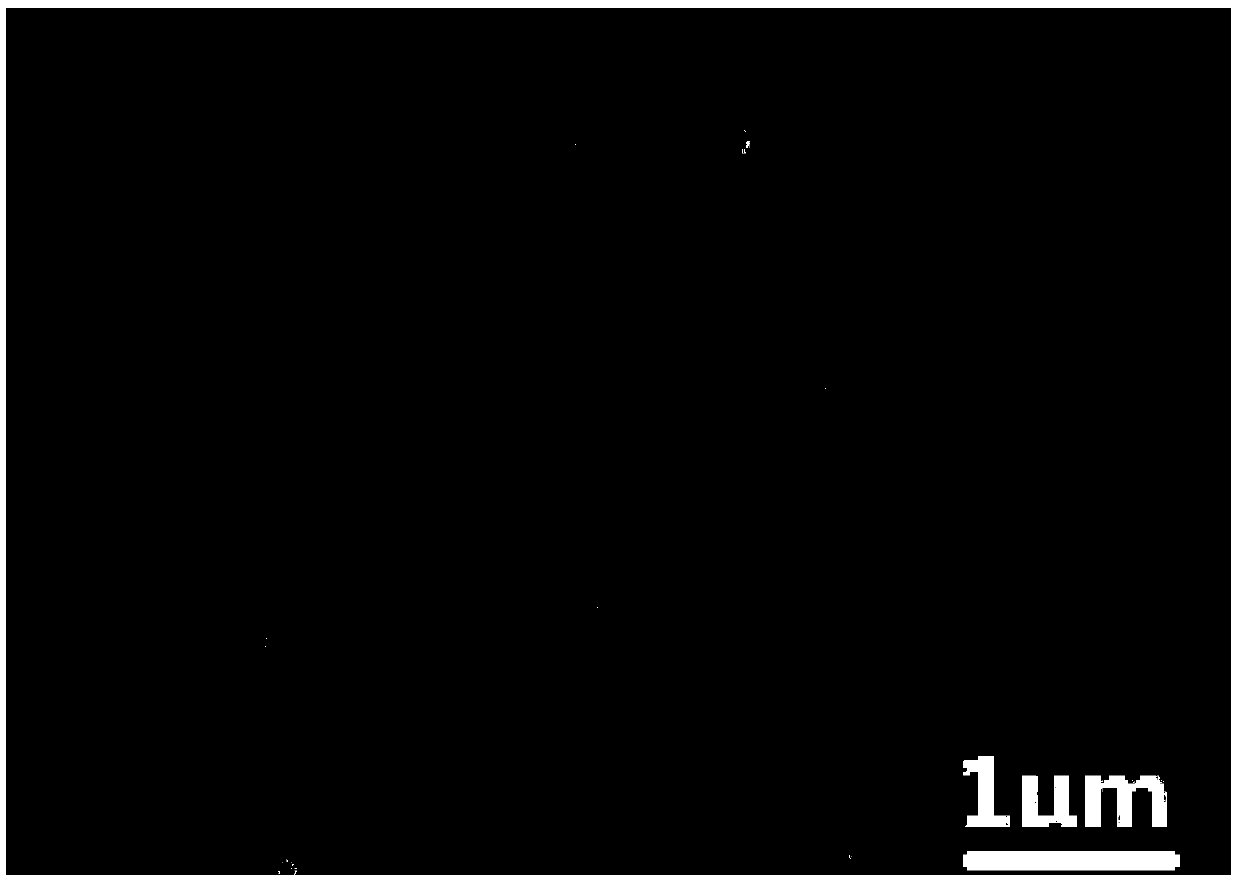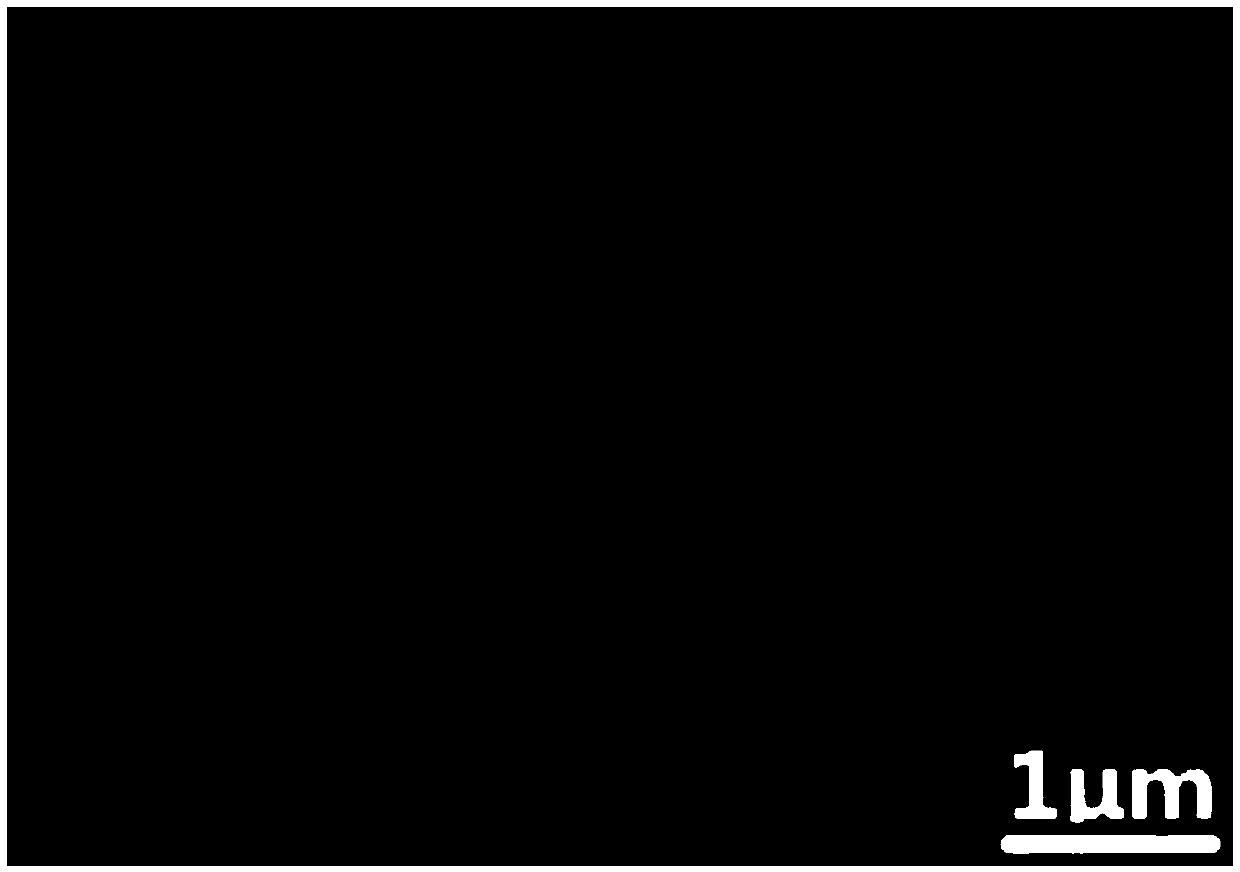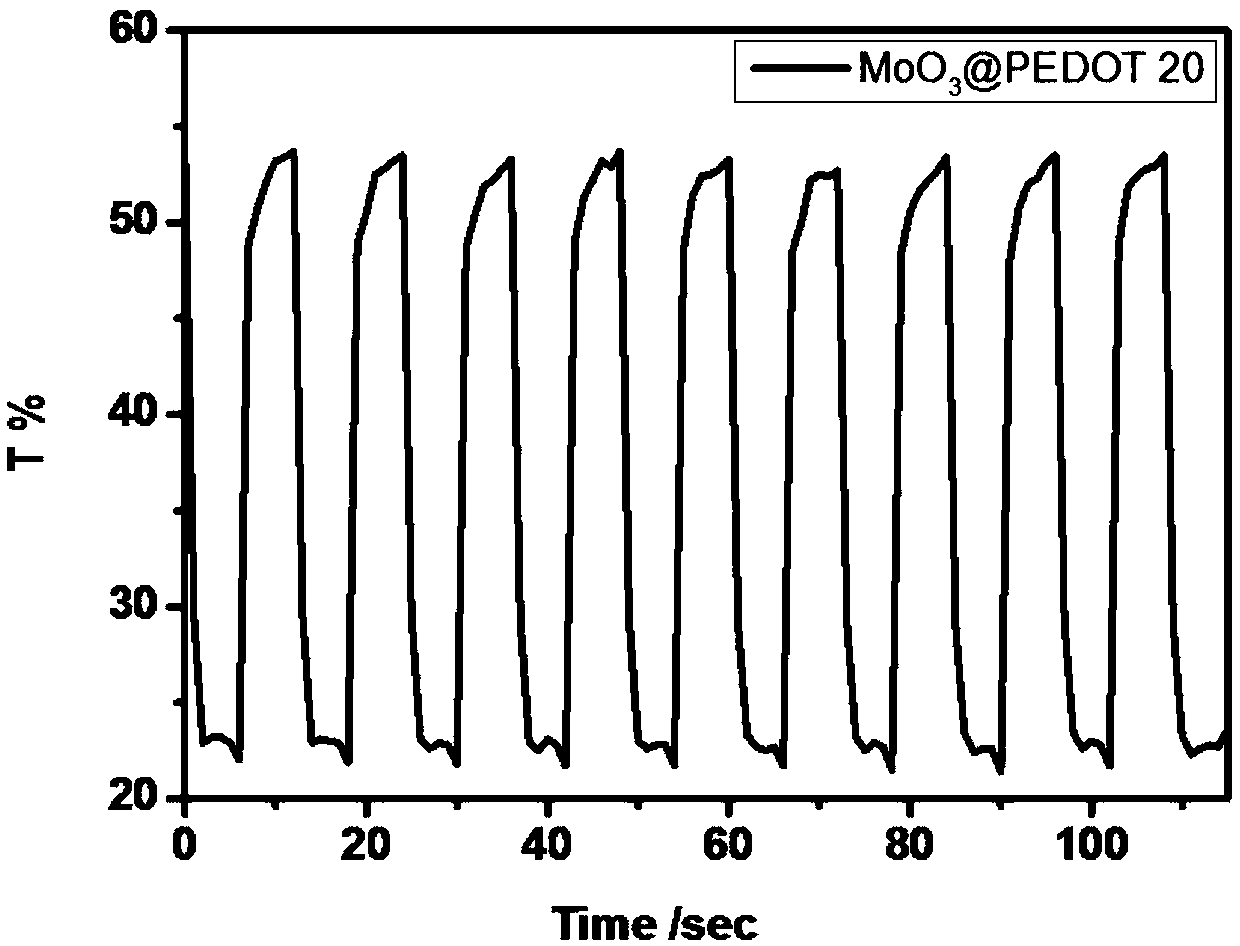MoO3@PEDOT composite material, preparation method and applications thereof
A composite material and reaction technology, applied in instruments, optics, nonlinear optics, etc., can solve problems such as zero-dimensional nanoparticle disorder, achieve outstanding electrochromic performance, simple preparation process, and low cost
- Summary
- Abstract
- Description
- Claims
- Application Information
AI Technical Summary
Problems solved by technology
Method used
Image
Examples
Embodiment 1
[0048] 1) Conductive glass pretreatment: ITO glass is ultrasonicated for 15 minutes each in acetone, absolute ethanol, and deionized water, and then dried as a spin-coating substrate.
[0049] 2) MoO 3 Preparation of nanobelts: with reference to Zhang Yuan, etc. in the literature (imaging science and photochemistry, 2012,30 (5): 384-389), the molybdenum powder that takes 1g is dispersed in 200mL H 2 o 2 (30%) and H 2 In the mixed solution of O (volume ratio 1:1), after rapid stirring, a light yellow clear and transparent solution was obtained; then transferred to a three-necked flask and stirred and heated at reflux at 100°C for 24h; 2 O. Wash the product by centrifugation with absolute ethanol, recover the precipitate, and dry it under vacuum at 50°C to obtain MoO 3 nanoribbons, such as figure 1 As shown, observed by scanning electron microscope, MoO 3 The morphology of the nanoribbons is very uniform, and the width is about 0.25 μm.
[0050] 3) MoO 3 Preparation of @P...
Embodiment 2
[0055] Same as Example 1, the difference is:
[0056] In the preparation of the composite material in the embodiment 2 step (3), at first, weigh the MoO prepared above of 0.1g 3 The nanobelts were dispersed in 10 mL of deionized water, and after ultrasonic treatment for 2 h, a 1 mol / L HCl (10 mL) solution containing 0.359 mL of EDOT monomer was added dropwise to the above solution. Subsequently, 1 mol / L HCl (10 mL) containing 0.18 g of ammonium persulfate (APS) was added dropwise to the above cloudy solution, and finally the solution was transferred to a constant temperature shaker, and the temperature was set at 25 ° C, and the rotation speed was 100 rpm for 8 h. Wash by centrifugation, recover the precipitate, and dry to obtain MoO 3 @PEDOT composite material, there is a scanning electron microscope to observe that PEDOT is evenly wrapped in MoO 3 On the surface, the thickness of the composite PEDOT is about 30nm.
[0057] 4) Preparation of composite electrochromic film: ...
Embodiment 3
[0060] Same as Example 1, the difference is:
[0061] In the preparation of the composite material in the step (3) of embodiment 3, at first, weigh the MoO prepared above of 0.1g 3 Nanobelts were dispersed in 10 mL of deionized water, and after ultrasonic treatment for 1.5 h, a 1 mol / L HCl (10 mL) solution containing 0.359 mL of EDOT monomer was added dropwise to the above solution. Subsequently, 1 mol / L HCl (10 mL) containing 0.18 g of ammonium persulfate (APS) was added dropwise to the above turbid solution, and finally the solution was transferred to a constant temperature shaker, and the temperature was set at 15 ° C, and the rotation speed was 300 rpm for 24 h. Wash by centrifugation, recover the precipitate, and dry to obtain MoO 3 @PEDOT composite material, there is a scanning electron microscope to observe that PEDOT is evenly wrapped in MoO 3 On the surface, the thickness of the composite PEDOT is about 85nm.
[0062]4) Preparation of composite electrochromic film:...
PUM
| Property | Measurement | Unit |
|---|---|---|
| length | aaaaa | aaaaa |
| width | aaaaa | aaaaa |
| thickness | aaaaa | aaaaa |
Abstract
Description
Claims
Application Information
 Login to View More
Login to View More - R&D
- Intellectual Property
- Life Sciences
- Materials
- Tech Scout
- Unparalleled Data Quality
- Higher Quality Content
- 60% Fewer Hallucinations
Browse by: Latest US Patents, China's latest patents, Technical Efficacy Thesaurus, Application Domain, Technology Topic, Popular Technical Reports.
© 2025 PatSnap. All rights reserved.Legal|Privacy policy|Modern Slavery Act Transparency Statement|Sitemap|About US| Contact US: help@patsnap.com



